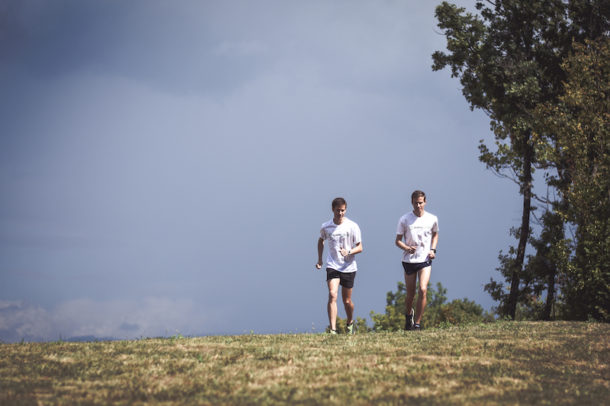
Running encompasses a unique set of terminologies that might seem complex at times, especially when it comes to understanding the concept of ‘threshold’. Many running aficionados recommend running at this anaerobic threshold pace. But what exactly is this pace, and how is it beneficial?
Contents
A matter of lactates
Lactic acid, an organic acid, is produced by the body during intense physical exertion. As its concentration in the blood increases, muscle contractions become more challenging.
The lactate anaerobic threshold, often simply referred to as the anaerobic threshold, represents the level of exertion at which lactate production and elimination in the body are in equilibrium.
Determining your lactic Anaerobic Threshold
The effort level at the lactic anaerobic threshold is typically sustainable for between 40 minutes and 1 hour, varying from athlete to athlete. This effort often aligns with a pace somewhere between that of a 10-kilometer race and a half-marathon.
In training, accurately measuring this threshold can be challenging. However, you can derive a practical estimation from race results, especially by considering the pace you could maintain in a race that lasts around an hour. The RunMotion Coach app uses this approach.
For a more precise measurement, a laboratory test can be conducted. This involves using a mask to measure the exchange of oxygen and carbon dioxide during running, enabling the calculation of the respiratory quotient. This quotient shows the proportions of lipids and carbohydrates that the body metabolizes. When the quotient reaches 1, the body stops using lipids, which typically indicates reaching the lactic anaerobic threshold.
Additionally, a blood test can be performed to check if the lactate concentration is around 4 millimoles per liter, which is the average concentration at this threshold. However, it’s important to note that this 4 millimoles per liter benchmark is not universal, adding complexity to pinpointing the exact threshold pace.
Generally, the lactic anaerobic threshold falls between 80% and 90% of a runner’s Maximum Aerobic Speed (MAS). The closer this percentage is to 90%, the more conditioned and endurance-trained the runner is considered to be.
Training at the Anaerobic Threshold: the essence of tempo runs
Threshold training, or ‘tempo runs’ as they’re famously known, are highly advocated by Anglo-Saxon runners. University-level runners often train at these paces, showing rapid improvement in long-distance efforts through this approach.
A good starting point for such training could be sessions like 2×10 minutes or 2×15 minutes at threshold pace. With more experience, you can progress to 2×20 minutes or even a single stretch of 30 minutes. Typically, a recovery period of 4 to 5 minutes is advised between each segment.
The primary objectives of these sessions are to enhance running economy and focus on relaxation. This training is incredibly beneficial for marathons, but it also aids significantly in 10km or half-marathon preparations, as the threshold pace closely aligns with the race pace for these distances, depending on the runner’s level.
Additionally, some GPS watches are equipped with algorithms that estimate the heart rate at the anaerobic threshold. Generally, these estimations are quite accurate, providing a useful tool for runners to gauge their training intensity.
What about the Aerobic Threshold?
The concept of the aerobic threshold is a subject of debate among scientists. It is often described as the pace that a runner could sustain in a race lasting approximately 6 hours. This pace aligns closely with basic endurance or a slightly more active level of endurance.
It’s important to remember that fundamental endurance is a critical component for progress in running and should constitute at least 60% of a runner’s training program.
Enjoy your tempo runs, and who knows, you might just become an expert on thresholds one day!